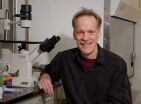INFORMATION:
The research was funded by a seed grant from the UB Department of Pediatrics and a research grant from the Maternal and Child Health Research Program of the U.S. Department of Health and Human Services, Health Resources and Services Administration.
Co-authors with Wen and Sharma are Kai Ling Kong, PhD, and Chuanbo Xie, MD, PhD, both of the UB Department of Pediatrics, and Rina Das Eiden, PhD, of UB's Research Institute on Addictions. END
Preschoolers eat healthy when parents set rules about food, UB study finds
Soda was found to be especially attractive to 4-year-olds whose parents did not have food rules
2014-11-07
(Press-News.org) BUFFALO, N.Y. -- Preschoolers whose parents have rules about what their children can and cannot eat have healthier eating habits than those raised without such rules, according to a new study by pediatrics researchers at the University at Buffalo.
The study also provides new information on how toddlers' ability to self-regulate, or control, their emotional and behavioral impulses influences their eating habits two years later, depending on the presence or absence of parental food rules.
The research is being presented on Nov. 7 at ObesityWeek 2014 in Boston. ObesityWeek runs concurrently with the annual meetings of The Obesity Society and the American Society for Metabolic and Bariatric Surgery.
"Parents can make a difference here by training young children to self-regulate and also by setting food rules in the home," says Xiaozhong Wen, PhD, assistant professor in the Department of Pediatrics in the UB School of Medicine and Biomedical Sciences and senior author on the research. "We found that the combination of parental rules and young children's ability to self-regulate their behaviors works best in teaching young children to eat healthy."
The UB study explores the researchers' hypothesis that the ability of children to self-regulate their emotions and behavior at 2 years of age would translate into healthier eating habits at 4 years of age. They used a widely accepted definition of self-regulation: the child's ability to override his or her natural and automatic tendencies or desires in order to pursue long-term goals.
To determine how much the child could self-regulate, parents were asked to rate how frequently the child exhibited emotional/behavioral responses, including irritability and fussiness, whimpering and their ability to wait for something.
The UB researchers examined associations between self-regulation in children at 2 years and their consumption at 4 years of age of these foods: fruit juices, soda, fresh fruit, fresh vegetables, fast food, salty snacks and sweets.
"In adults and adolescents, self-regulation, emotional eating and obesity have been well-studied, but there is very little information about the role that self-regulation plays in young childhood obesity," says Wen.
"We found that children who were able to self-regulate at 2 years old had healthy eating habits by the time they were 4 years old, so long as their parents also set rules about the right types of foods to eat," he says. "We found that self-regulation by itself, without parental food rules, made little difference in childrens' later eating habits."
That finding is key, explains Neha Sharma, a co-author and recent UB graduate from the Department of Psychology who presented the research.
"It is amazing to see that a parental rule about which types of food a child can and cannot eat could have such a great impact on child eating habits," says Sharma. "Without these boundaries set by caregivers, the benefits of high self-regulation on weight gain and childhood obesity could be diminished. This illustrates just how important parental involvement is in influencing child eating habits."
Among the unhealthy food items, soda was the one that children consumed most if their parents had no food rules.
"We found that preschoolers whose parents had no food rules drink soda about 25 percent more than children whose parents had food rules," explains Wen. "We found that soda is pretty attractive to preschoolers, but soda cannot kill their hunger. It doesn't fill them up." This finding provides some insight he says, into how young children with no parental food rules begin early consumption of unhealthy foods.
The study was based on data from the Early Childhood Longitudinal Study, Birth Cohort (ECLS-B), a federally funded, nationally representative sample conducted by the U.S. Department of Education of approximately 10,700 children born in the U.S. in 2001. Data was gathered from parents and teachers who completed surveys and phone interviews about children at various ages. It was designed to provide detailed information about children's early life experiences, including health, development, care and education.
The UB study focused on a subsample of 8,850 children and involved analysis of data on self-regulation behaviors of 2-year-olds and the diets and parental food rules of the same children when they reached 4 years of age.
The researchers are considering designing a new study to see whether improvements in toddlers' ability to self-regulate their behaviors results in their eating healthier foods.
ELSE PRESS RELEASES FROM THIS DATE:
Iodide protects against dangerous reperfusion injury after heart attack
2014-11-07
As if having a heart attack isn't bad enough, cardiologists know that the worst damage may actually occur after it's over.
Blocked arteries are typically the trigger, stopping the flow of blood and starving the heart muscle of oxygen. But when the blockage is removed and the blood comes rushing back, it wreaks havoc of its own. The result is called reperfusion injury, a life-threatening flood of inflammation and cellular destruction that has stumped scientists for 40 years.
Now, however, a potentially groundbreaking study by Fred Hutchinson Cancer Research Center scientists, ...
UTSA professor studies cell phone habits of college students in US and South Korea
2014-11-07
Seok Kang, associate professor in the UTSA Department of Communication, collaborated with Korean researcher Jaemin Jung to study the smartphone habits of college students in the United States and South Korea. The researchers were particularly interested in the type and amount of information college students from both countries disclose. The study was published in Computers in Human Behavior.
The two countries were selected due to the high rates of smartphone ownership among their young adults. Eighty percent of Americans own smartphones while the ownership rate in Korea ...
CCNY-led discovery may help breast cancer treatment
2014-11-07
Researchers led by Dr. Debra Auguste, associate professor, biomedical engineering, in the Grove School of Engineering at The City College of New York, have identified a molecule that could lead to developing treatment for one of the most aggressive forms of breast cancer.
Triple negative breast cancers (TNBCs) have a high mortality rate owing to aggressive proliferation and metastasis and a lack of effective therapeutic options. However, Professor Auguste's team, discovered the overexpression of intercellular adhesion molecule-1 (ICAM-1) in human TNBC cell lines and tissues, ...
Office stress? Workers may wait before acting out, SF State study finds
2014-11-07
Employers know that dramatic changes in the workplace, such as the start of the "busy season" or a new, more demanding boss, can cause employees to act out in ways that hurt the bottom line. But a new study suggests that companies may be underestimating the impact of such behavior because they assume it only happens immediately after a stressful change.
The research from SF State organizational psychologist Kevin Eschleman shows that many employees wait weeks or months before engaging in "counterproductive work behaviors," like taking a longer lunch or stealing office ...
Mars spacecraft, including MAVEN, reveal comet flyby effects on Martian atmosphere
2014-11-07
Two NASA and one European spacecraft, including NASA's MAVEN mission led by the University of Colorado Boulder, have gathered new information about the basic properties of a wayward comet that buzzed by Mars Oct. 19, directly detecting its effects on the Martian atmosphere.
Data from observations carried out by MAVEN, NASA's Mars Reconnaissance Orbiter (MRO) and the European Space Agency's Mars Express spacecraft revealed that debris from the comet, known officially as Comet C/2013 A1 Siding Spring, caused an intense meteor shower and added a new layer of ions, or charged ...
NFL TV ratings: Bandwagon is everyone's second-favorite team
2014-11-07
A new study by Brigham Young University and the Fox affiliate in Salt Lake City shows that choosing to broadcast a local favorite isn't always the smartest ratings decision.
The new study shows how TV execs should decide which games to air when the home-town team isn't playing - or in markets like Utah that don't have their own team. Traditionally the most popular teams in Utah have been the Broncos, Cowboys and 49ers.
"When you look at the difference between the average team effect, like say the Miami Dolphins, and the next top tier after the Denver Broncos, the results ...
Reprogrammed cells grow into new blood vessels
2014-11-07
HOUSTON -- ( Nov. 7, 2014 ) -- By transforming human scar cells into blood vessel cells, scientists at Houston Methodist may have discovered a new way to repair damaged tissue. The method, described in an upcoming issue of Circulation (early online), appeared to improve blood flow, oxygenation, and nutrition to areas in need.
Cardiovascular scientists at Houston Methodist, with colleagues at Stanford University and Cincinnati Children's Hospital, learned that fibroblasts -- cells that causes scarring and are plentiful throughout the human body -- can be coaxed into becoming ...
Research shows easy-to-walk communities can blunt cognitive decline
2014-11-07
LAWRENCE -- New study results from the University of Kansas to be presented this weekend at the Gerontological Society of America's annual meeting in Washington, D.C., bolster the adage that "heart healthy is brain healthy." The investigation shows neighborhoods that motivate walking can stave off cognitive decline in older adults.
"People can walk either to get somewhere or for leisure," said Amber Watts, assistant professor of clinical psychology, who will share her findings at a symposium Sunday, Nov. 9, in Liberty Salon K at the Washington Marriott Marquis.
"Depending ...
Cybersecurity experts discover lapses in Heartbleed bug fix
2014-11-07
A detailed analysis by cybersecurity experts from the University of Maryland found that website administrators nationwide tasked with patching security holes exploited by the Heartbleed bug may not have done enough.
First disclosed in April 2014, Heartbleed presents a serious vulnerability to the popular OpenSSL (Secure Sockets Layer) software, allowing anyone on the Internet to read the memory of systems that are compromised by the malicious bug.
Assistant Research Scientist Dave Levin and Assistant Professor of Electrical and Computer Engineering Tudor Dumitras were ...
Researchers take new approach to stop 'Most Wanted' cancer protein
2014-11-07
BOSTON (November 7, 2014) -- Researchers at Dana-Farber/Boston Children's Cancer and Blood Disorders Center have found a way to defeat one of the most tantalizing yet elusive target proteins in cancer cells - employing a strategy that turns the protein's own molecular machinations against it.
In a study published online by the journal Cell, the scientists used a specially crafted compound to disrupt the protein's ability to rev up its own production and that of other proteins involved in tumor cell growth. The result, in laboratory samples of neuroblastoma cancer cells ...
LAST 30 PRESS RELEASES:
The Journal of Nuclear Medicine ahead-of-print tip sheet: December 12, 2025
Smarter tools for peering into the microscopic world
Applications open for funding to conduct research in the Kinsey Institute archives
Global measure underestimates the severity of food insecurity
Child survivors of critical illness are missing out on timely follow up care
Risk-based vs annual breast cancer screening / the WISDOM randomized clinical trial
University of Toronto launches Electric Vehicle Innovation Ontario to accelerate advanced EV technologies and build Canada’s innovation advantage
Early relapse predicts poor outcomes in aggressive blood cancer
American College of Lifestyle Medicine applauds two CMS models aligned with lifestyle medicine practice and reimbursement
Clinical trial finds cannabis use not a barrier to quitting nicotine vaping
Supplemental nutrition assistance program policies and food insecurity
Switching immune cells to “night mode” could limit damage after a heart attack, study suggests
URI-based Global RIghts Project report spotlights continued troubling trends in worldwide inhumane treatment
Neutrophils are less aggressive at night, explaining why nighttime heart attacks cause less damage than daytime events
Menopausal hormone therapy may not pose breast cancer risk for women with BRCA mutations
Mobile health tool may improve quality of life for adolescent and young adult breast cancer survivors
Acupuncture may help improve perceived breast cancer-related cognitive difficulties over usual care
Nerve block may reduce opioid use in infants undergoing cleft palate surgery
CRISPR primes goldenberry for fruit bowl fame
Mass General Brigham announces new AI company to accelerate clinical trial screening and patient recruitment
Fat tissue around the heart may contribute to greater heart injury after a heart attack
Jeonbuk National University researcher proposes a proposing a two-stage decision-making framework of lithium governance in Latin America
Chromatin accessibility maps reveal how stem cells drive myelodysplastic progression
Cartilaginous cells regulate growth and blood vessel formation in bones
Plant hormone allows lifelong control of proteins in living animal for first time
Swedish freshwater bacteria give new insights into bacterial evolution
Global measures consistently underestimate food insecurity; one in five who suffer from hunger may go uncounted
Hidden patterns of isolation and segregation found in all American cities
FDA drug trials exclude a widening slice of Americans
Sea reptile’s tooth shows that mosasaurs could live in freshwater
[Press-News.org] Preschoolers eat healthy when parents set rules about food, UB study findsSoda was found to be especially attractive to 4-year-olds whose parents did not have food rules






